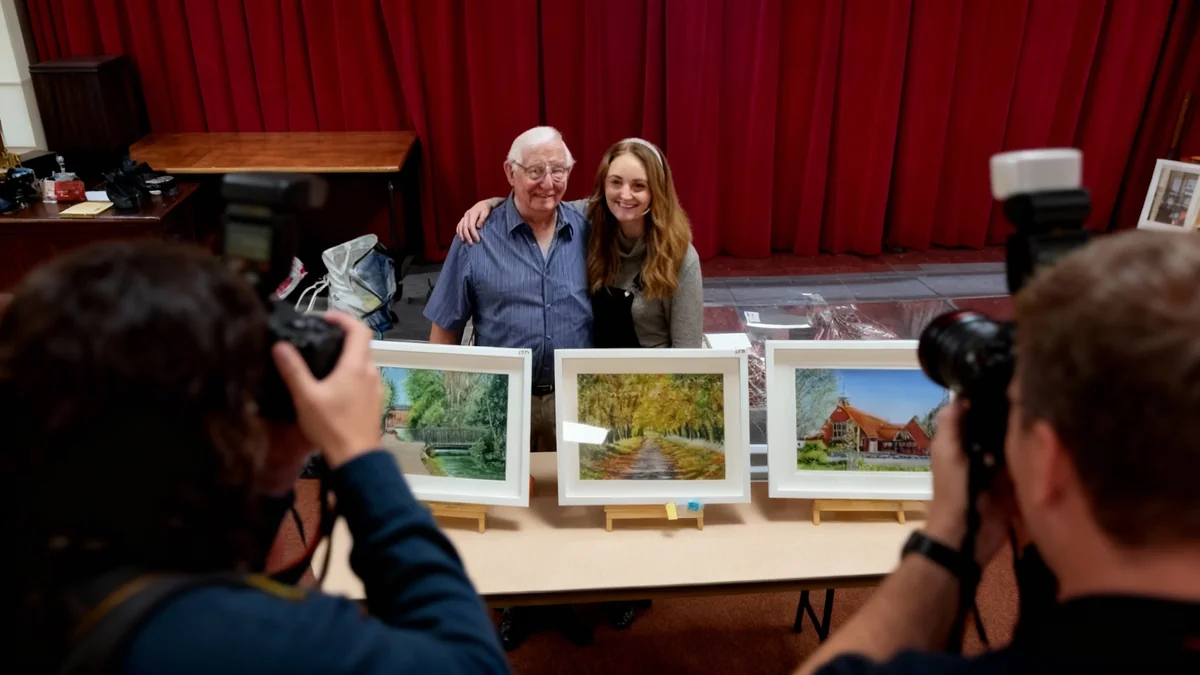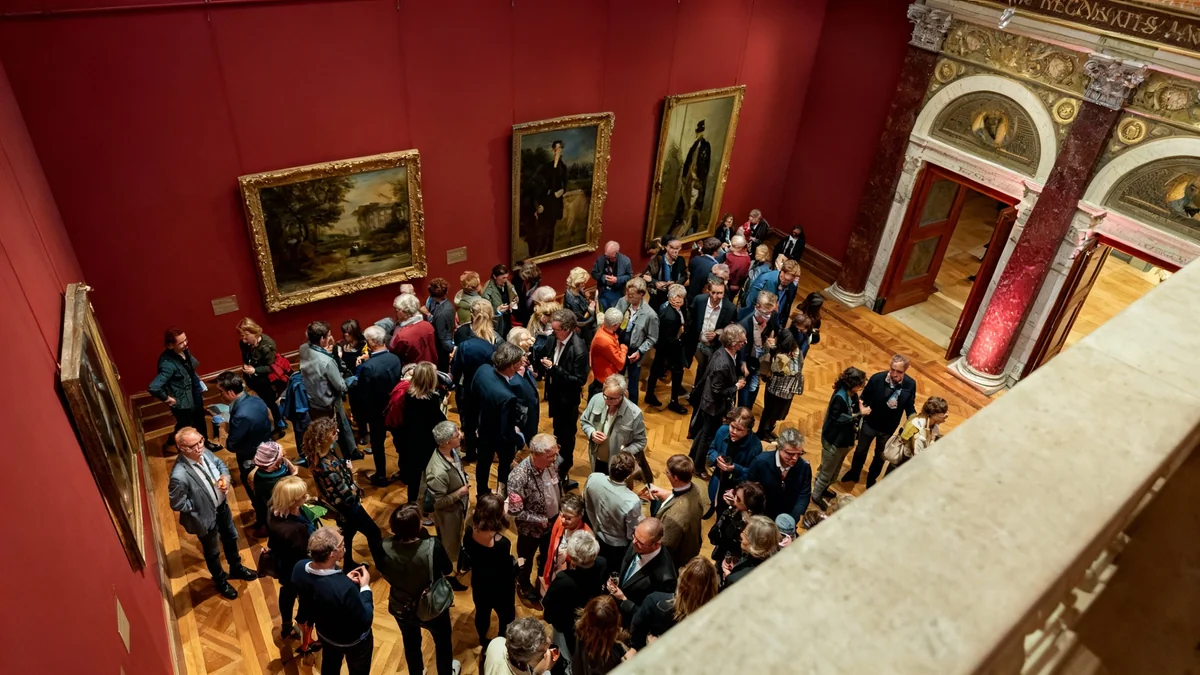The Philadelphia Museum of Art (PMA) is celebrating the 100th anniversary of the Surrealist movement with a major exhibition. The show, titled “Dreamworld: Surrealism at 100,” opens on November 8. Philadelphia is the only U.S. city to host this international touring exhibition, which features works from over 60 artists.
This retrospective highlights the movement's origins in 1924 and its impact on art and philosophy. It brings together famous names like Salvador Dalí and Pablo Picasso, alongside lesser-known figures, offering a comprehensive look at Surrealism's diverse expressions.
Key Takeaways
- Philadelphia Museum of Art hosts "Dreamworld: Surrealism at 100."
- The exhibition marks the Surrealist movement's 100th anniversary.
- Philadelphia is the sole U.S. stop for this international touring show.
- Over 60 artists are featured, including Man Ray, Dalí, and Picasso.
- The PMA holds one of the world's largest collections of Marcel Duchamp's work.
Surrealism's Global Journey to Philadelphia
The "Dreamworld: Surrealism at 100" exhibition has traveled globally before reaching Philadelphia. It began in Brussels, Belgium, last year. Subsequent stops included Paris, Madrid, and Hamburg, Germany. The PMA's selection as the only U.S. venue underscores its significant role in preserving and showcasing Surrealist art.
The exhibition focuses on the movement's international reach and its development. It includes artists who fled Europe during World War II. These artists continued their work from new locations, such as Mexico, the Caribbean, and New York. This particular emphasis adds a unique dimension to the Philadelphia presentation.
Exhibition Details
- Opening Date: November 8
- Closing Date: February 16
- Location: Philadelphia Museum of Art, 2600 Benjamin Franklin Parkway
- Number of Artists: More than 60
Man Ray's Iconic Work on Display
Among the notable pieces in the exhibition is a replica of Man Ray’s famous sculpture, Object to Be Destroyed. This work, originally created in 1923, is a metronome with an eye cutout attached to its pendulum. Man Ray, born Emmanuel Radnitzky in South Philadelphia in 1890, transformed an everyday object into a piece of art.
The sculpture's history is complex. Man Ray initially destroyed the original in a moment of frustration. Later, in 1957, art students reportedly shot a replica in a gallery. This cycle of creation and destruction led Ray to rename it Indestructible Object. The idea behind the artwork, he believed, could never truly be erased. Replicas now exist in several collections, including the PMA's.
"A painter needs an audience," Man Ray once explained, referring to the metronome's presence in his studio as he painted.
The Philosophical Roots of Surrealism
Surrealism was formally defined in 1924 by French writer André Breton. He articulated it as an artistic and literary movement. Breton believed that imagination was crucial for human life and liberation. Surrealist works often combine elements of reality and fantasy, creating dream-like visuals.
For example, Salvador Dalí’s Aphrodisiac Telephone replaces a telephone receiver with a lobster. Dorothea Tanning’s Birthday features a robe that appears to be made of small bodies. These artists aimed to reveal unexpected truths by showcasing their most outlandish thoughts. They spent hours crafting absurd artworks with a clear purpose.
Surrealism's Core Idea
Surrealism was not merely an art style. It was a philosophy that challenged the existing social order. It sought to transform how people perceived the world and themselves. The movement aimed to make viewers uncomfortable in a positive way, encouraging new perspectives.
Matthew Affron, the Muriel and Philip Berman curator of modern art at PMA, emphasized this point. "Surrealism was not an art movement and not a movement in literature, although we think of it that way. It was a philosophy of life all about revolt against the status quo… and, at the same time, reimagining the way things might be," Affron stated. He added, "It wants to make you uncomfortable in a good way, to change your frame of reference, to change your way of seeing the world and yourself, to shock you out of mental reference points.”
Philadelphia's Role in Surrealist Art
While Philadelphia was not a historical center for Surrealism, the PMA has become a significant repository for Surrealist art. This is largely due to the efforts of former director Fiske Kimball in the 1950s. Kimball successfully acquired major collections from Albert E. Gallatin and Louise and Walter Arensberg.
The Arensbergs' collection, in particular, established the PMA as the home of the world’s largest collection of works by Marcel Duchamp. Duchamp, a provocative French artist, coined the term "ready-made piece" in the 1910s. His approach involved transforming everyday objects into art, such as his famous work Fountain, a porcelain urinal.
Kimball's foresight was remarkable. "Though we think of many of the artists whose works are in the Arensberg collection as museum artists today, in 1950, it was not obvious to everyone that these would be lasting figures… not everyone agreed that they would be important forever," Affron noted.
Man Ray's Connection to Duchamp and Philadelphia
Man Ray’s life trajectory changed after he met Marcel Duchamp in 1915. This meeting occurred at an artist colony in Ridgefield, New Jersey, arranged by Walter Arensberg. Ray, born Emmanuel Radnitzky, was the son of Russian Jewish immigrants. His family lived in South Philadelphia until he was seven, then moved to Brooklyn.
Ray became one of the few Americans in the Parisian Surrealist scene, where he moved in 1921. He developed a cameraless photographic technique called the Rayograph. He also experimented with film, with his 1923 work Return to Reason also featured in the exhibition.
Many of Ray's well-known works depict his former lovers and muses. His photograph Le Violon d’Ingres (1924), featuring French model Kiki de Montparnasse, sold for $12.4 million in 2022, setting a record for the most expensive photograph at auction.
Man Ray's Legacy
- Born in Philadelphia in 1890 as Emmanuel Radnitzky.
- Pioneered the Rayograph, a cameraless photographic technique.
- His photograph Le Violon d’Ingres set an auction record in 2022.
The Metronome and Lee Miller
The metronome sculpture also symbolizes Ray's relationship with photographer Lee Miller. After their breakup in 1932, a heartbroken Ray placed an image of Miller's eye on the metronome's pendulum. In an art journal that same year, he invited others to create their own versions, providing specific instructions:
- "Cut out the eye from a photograph of one who has been loved but is seen no more."
- "Attach the eye to the pendulum of a metronome and regulate the weight to suit the tempo desired."
- "Keep going to the limit of endurance. With a hammer well-aimed, try to destroy the whole at a single blow."
Despite his international acclaim, Man Ray did not receive as much recognition in his home country during his lifetime. An Inquirer obituary in 1976 referred to him as "an artistic prophet without sufficient honor in his own country." The upcoming exhibition at the PMA offers Philadelphia audiences a chance to fully appreciate his contributions.
The exhibition will run from November 8 through February 16, 2026. Visitors can experience the full scope of Surrealism's impact and the works of its diverse artists. No destruction of artwork is permitted, ensuring the preservation of these significant pieces.




